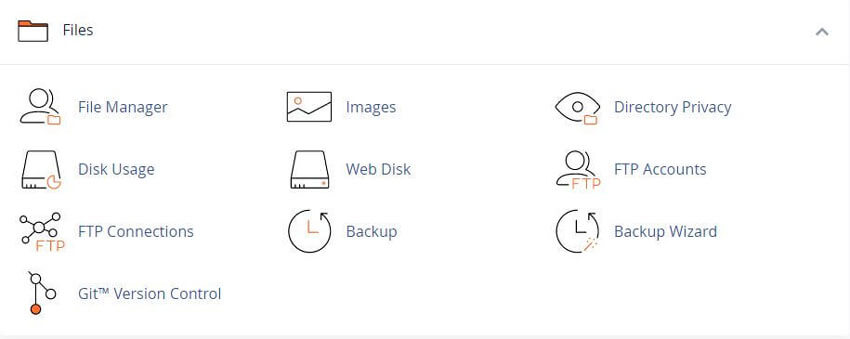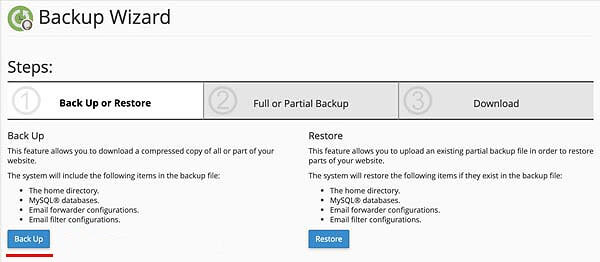PayPal, Stripe, Credit Card, Amazon Pay, Giropay, EPS, Apple Pay, Google Pay, Klarna, Bancontact, Samsung Pay
You can choose to create a full backup file or a partial backup file.
You will not be able to use the "full backup file" to restore your files through the cPanel feature.
You need to compress the backup file prior to restoration.
After decompressing the backup file, you can upload and restore individual sections of your site that the full backup file contains.
The backup process for an account near or over its quota may fail because the system cannot write necessary files, such as a database lock file.

To create a full backup:
I) From the main Backup Wizard interface, click Back Up. The Full or Partial Backup section of the interface will appear.

Important: Only advanced users should select the Remote FTP Server, Remote FTP Server (passive mode transfer), or SFTP destination settings.
Perform one of the following actions to configure notifications for this backup file:
If you selected the Remote FTP Server, Remote FTP Server - passive mode transfer, or Secure Copy - SCP destinations, enter the remote destination’s information in the available text boxes.
Click Generate Backup. A confirmation message will appear. Click Go Back to return to the Download section of the interface.
If you selected the Home Directory setting in step 3, click the filename in the Download section of the interface to download the backup file.
The backup file is in backup-MM-DD-YYYY format, where MM is the month, DD is the date, and YYYY is the four-digit year.
The system stores full backup files as tarballs that use the .tar.gz file extension.
To back up a portion of your site, perform the following steps:
To restore a portion of your site from an existing backup, perform the following steps:
When you back up your /home directory, the backup file includes the following files:
All the files that you own.
Files that you do not own, but can access.
Note: Backup files do not include files from your /home directory that you do not own and cannot access.
To exclude certain files and Directories from a backup file, place a configuration file in your home directory. For more information, read our How to Exclude Files From Backups documentation.
Tweet Share Pin Email
This policy contains information about your privacy. By posting, you are declaring that you understand this policy:
This policy is subject to change at any time and without notice.
These terms and conditions contain rules about posting comments. By submitting a comment, you are declaring that you agree with these rules:
Failure to comply with these rules may result in being banned from submitting further comments.
These terms and conditions are subject to change at any time and without notice.
Comments